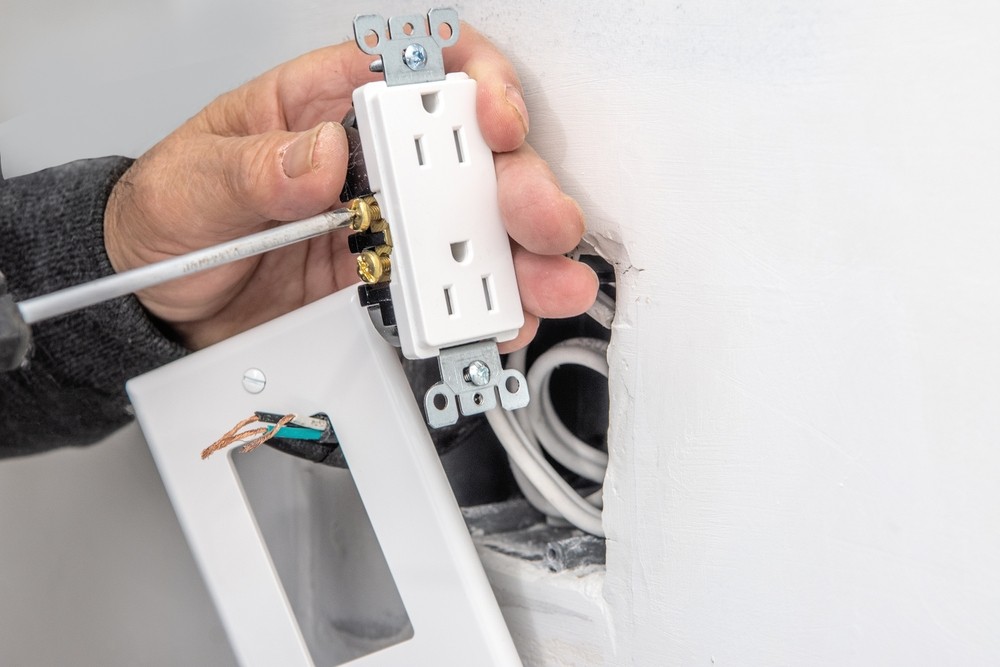Regarding the intricacies of electrical wiring that powers our offices and buildings, understanding the distinction between line and load is crucial for safety and functionality. Let’s unravel the mystery behind these terms, explaining their definitions, purposes, and why distinguishing between them is essential. We'll also delve into the significance of seeking professional help when dealing with testing or repairing building electrical systems.
Definition of Line and Load
The "line" refers to the power supply entering a device or electrical system, carrying electrical energy from the source. On the other hand, the "load" is the part of the system that consumes this electrical energy to perform a specific function, such as lighting a room or operating an appliance.
Purpose of Each Wire
The distinction between "line" and "load" in electrical systems is fundamental to understanding the flow of electrical energy and how it powers various devices within a circuit.
Line: The Conduit of Power Supply
The term "line" designates the conduit through which electrical power enters a device or an electrical system. It serves as the initial pathway for the flow of electrical energy, connecting the device to the power source. In essence, the line is the lifeline that carries the electric potential from the source—whether it be a power grid or a generator—into the intricate network of wiring within a circuit. It is the starting point, the ingress of power that sets the entire electrical system in motion.
Load: Consuming Electrical Energy for Functionality
Conversely, the term "load" refers to the integral component of the system that consumes the electrical energy delivered through the line. This consumption of energy is not arbitrary; rather, it is purposeful and directed toward specific functions. Devices categorized as the load include light fixtures illuminating a room, appliances performing various tasks, or any equipment that relies on electrical power to execute its intended purpose. The load, in essence, represents the endpoint of the electrical journey, transforming electrical energy into tangible actions or outputs within the system.
Understanding the symbiotic relationship between line and load is akin to deciphering the language of electrical circuits. The line initiates the journey, while the load interprets and utilizes this energy to manifest functionality. This dynamic is the essence of electrical systems, where the line and load collaborate harmoniously to bring power to life.
Understanding the difference between line and load:
1. Preventing Electrocution and Fire Hazards
Incorrectly identifying line and load wires poses a serious risk of electrical shocks and fires. Accurate recognition and proper connection of these wires are essential safeguards against electrocution, ensuring that electrical currents flow safely through the designated pathways. This precautionary measure significantly reduces the likelihood of fire hazards, contributing to a secure environment within homes and buildings.
2. Preserving Appliance Longevity
Beyond immediate safety concerns, the accurate differentiation between line and load wires is instrumental in preserving the longevity of electrical appliances. Appliances are designed to receive power in specific configurations, and misidentification can lead to voltage irregularities, damaging sensitive components. By ensuring correct wiring, individuals contribute to the durability of appliances, mitigating the need for frequent replacements and reducing overall maintenance costs.
3. Optimizing Energy Efficiency
Distinguishing between line and load wires is pivotal for optimizing energy efficiency within electrical systems. Properly connected circuits operate more efficiently, minimizing energy waste. This not only aligns with sustainable practices but also results in cost savings for homeowners and businesses. A conscientious approach to wiring promotes an eco-friendly and economically viable electrical infrastructure.
4. Ensuring System Resilience
The correct identification of line and load wires is crucial for the resilience of the entire electrical system. Incorrectly connected wires can lead to the malfunctioning of equipment or, in extreme cases, system failure. By adhering to proper wiring practices, individuals contribute to the reliability of the electrical infrastructure, reducing the likelihood of system breakdowns and unexpected outages.
5. Facilitating Seamless Inspections
Compliance with electrical codes and standards not only ensures safety, but also facilitates seamless inspections. Recognizing line and load wires correctly aligns with regulatory requirements, preventing potential legal issues related to building safety violations. This proactive approach streamlines the inspection process, allowing for efficient assessments that meet or exceed established standards.
"Line" and "Load" in Low-Voltage Circuits
For low-voltage circuits, such as those powering doorbells or landscape lights, the terms "line" and "load" take on additional meanings beyond their conventional definitions in high-voltage electrical systems. In general higher voltage electricity is more efficient and less expensive for long-distance electricity transmission. Lower voltage electricity is safer for use in homes and businesses.
1. Line in Low-Voltage Circuits
In low-voltage wiring scenarios, "line" refers to the parts of the circuit that operate at full household voltage, typically around 120 volts. This distinction is crucial to differentiate them from the low-voltage wiring and devices used after the voltage has been stepped down by a transformer. Understanding the line in low-voltage circuits helps ensure proper installation and operation of devices like doorbells and landscape lighting.
2. Load as Electrical Demand
In a broader context, "load" is a general term that describes the electrical demand or power draw placed on a circuit by a device or appliance. For instance, when dealing with a lighting circuit, calculating the "total load" involves adding up the maximum wattage of all the light fixtures connected to the circuit. This calculation provides insight into the maximum potential power demand of all the lights combined.
Determining whether it's the line wire or the load wire is essential in various situations, including installation, replacement, and troubleshooting of devices such as GFCI outlets, light switches, and dimmers. It is crucial to differentiate between line and load wiring to ensure the correct connection of cables, enabling these devices to function properly.
Here are specific instances highlighting the importance of distinguishing between line and load wiring
- GFCI Outlets: GFCI outlets have distinct terminals for line and load wiring. Incorrectly connecting these wires can be hazardous, as GFCI is designed to cut power in the event of a ground fault. Mixing up line and load wires in GFCI outlets may lead to dangerous situations, particularly because GFCI outlets have internal breakers. If the downstream load wire continues to function, accidental electrocution becomes a significant risk. Unlike most other circuits, where mixed-up line and load wires simply result in non-functioning devices, GFCI outlets pose a unique safety concern.
- Light Switches and Dimmers: The proper functioning of light switches and dimmers relies on correctly identifying and connecting line and load wires. Mixing up these wires will result in these devices not working as intended. Therefore, ensuring the accurate wiring of line and load is crucial for the effective operation of light control systems.
- Troubleshooting Electrical Issues: When troubleshooting any electrical issue with a device, understanding the locations of line and load wires becomes pivotal. This knowledge helps determine whether power is reaching the device, aiding in the identification and resolution of electrical problems.
The Importance of Professional Assistance
While some individuals may attempt DIY electrical work, it is strongly advised to seek professional help when testing or repairing building electrical systems. Our electrical engineers in California possess the knowledge, experience, and tools necessary to accurately identify and handle line and load wires, ensuring the safety and functionality of the electrical system.
The distinction between line and load wires is fundamental to the safety and efficiency of electrical systems. By understanding the definitions, purposes, and importance of distinguishing between these wires, individuals can contribute to safer homes and buildings. Remember, when it comes to repairing or testing electrical systems, always consult a qualified professional to guarantee a secure and reliable outcome.
A proactive approach to electrical safety is an investment in the longevity and reliability of your workplace infrastructure. For tailored solutions and expert guidance in optimizing your electrical safety, connect with MTA – your partner in electrical safety in California. Contact us today!

